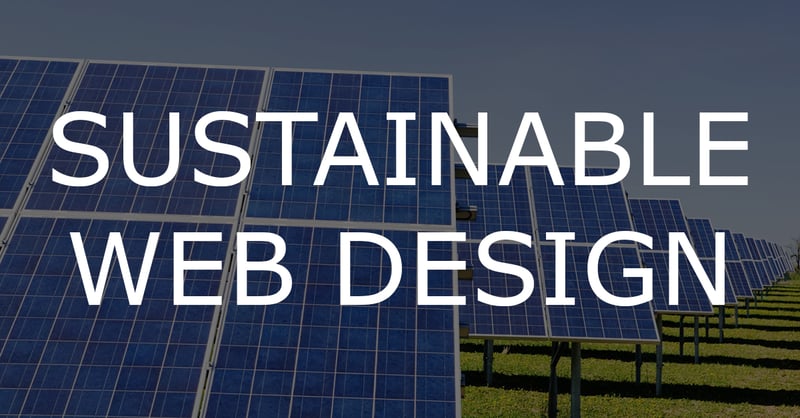 Every day our world becomes more intertwined with the technologies we create.
Every day our world becomes more intertwined with the technologies we create.
Four-year-olds operate iPads like experienced surgeons, “Google it” means an entire generation may never see the inside of a library, and we refuse to try a new restaurant without reading the menu and reviews on our phones first.
And all of this is taking place while we as a society are becoming more and more conscious of the environmental impact our actions have on the planet.
Of course, we all want to recycle, to install solar panels on our roof, drive that new Tesla, and reduce our carbon footprint.
But have you ever thought about the true cost of reading this blog right now, or Christmas shopping online?
Begin by thinking about all the time we spend online in one day. Then take into account that the carbon emissions of a single tweet are the same as a cow passing gas.
It sounds funny at first I know, but the math behind it is actually quite frightening.
According to most estimates, by 2025 the Internet will be the world’s 4th largest producer of carbon emissions, behind only the USA, China and India.
How can this be true?
Put simply, the Internet by design is endlessly hungry for energy to fuel vast amounts of data storage, website hosting, crypto mining, tweeting, shopping ... (you get the idea)
As individuals, we rarely consider the amount of energy we truly consume. Apart from what shows up on our monthly power bill, it is out of sight out of mind.
But think back for a moment to what you have done online this week, today, or even just the past hour. Were you searching for something? Shopping? Reading the news?
Now think about how much of that time could have been shaved off if those websites had been as easy to navigate as possible, and how much energy could have been saved if they only displayed the information you wanted to see.
Now think about your company’s website. Was it built with sustainability in mind? Is it easy for the customer to find? Once they are on the site, is it intuitive and well thought out? Is it responsive to a mobile device? Are there unnecessary and bulky images?
The beautiful thing about sustainable website design is that it truly helps a business grow by putting both their customer and the planet first. The convergence of sustainability and functionality is what makes a great website design it today's world.
So how can you increase traffic and customer satisfaction while at the same time reducing your carbon footprint?
Easy, read Lane Terralever’s UX and Design Team’s tips and sign up for a complimentary Green Website Evaluation below!
Increase Your Findability:
The easier content is to find equates to less time spent searching by the user meaning fewer pages loaded, and less unnecessary server requests made. These savings, though small individually, build over time.
- Keyword Optimization - Strategically placing keywords throughout your website will bring your content to the top of search results.
- Quality Content - Serving the user content that brings value at the exact moment they need it, to get them off the device and off the grid.
- Link Building - Providing unique and valuable content helps link others to your site and increase the right traffic.
- Fix broken links - Prevent user bounce rate by consistently checking for broken lines to minimize 404 error codes.
Enhance Performance Optimization:
The more efficiently your site functions the less power it takes to run, less power means less energy and less energy is the whole point!
Here are a few ways you can increase your site’s efficiency:
- Load Speed - Today we expect instant gratification, any page load speeds over 2-3 seconds will increase user bounce rate drastically.
- Optimize Images - Keep your site lean and functioning quickly by utilizing PNG to load images fast.
- CSS Sprites - Reduce the number of HTTP requests with by storing a collection of images within a single graphic.
Design and User Experience:
By definition, a green website is one centered on understanding the user’s wants/needs and serving that experience efficiently.
- Empathy Mapping – Understanding the customer journey before you get started to streamline the process and better serve their needs.
- Mobile First - Optimizing your site mobile first minimizes content by focusing on essential functions only, cutting back on energy consumption.
- Responsive Design - A responsive design creates a seamless experience between desktop and mobile by optimizing one, we optimize the other.
- Maintenance - A good design is only as a good as the upkeep, cleaning up content and continually improving is essential.
Green Hosting:
Servers that store the files of your website run 24/7/365 and require immense amounts of power. Consider looking for a hosting provider that runs completely on renewable energy.
Not sure how your site stacks up? Let our team of experts give you our complimentary Green Website evaluation today!
Fill out the form at the bottom of the page to receive our free assessment.




